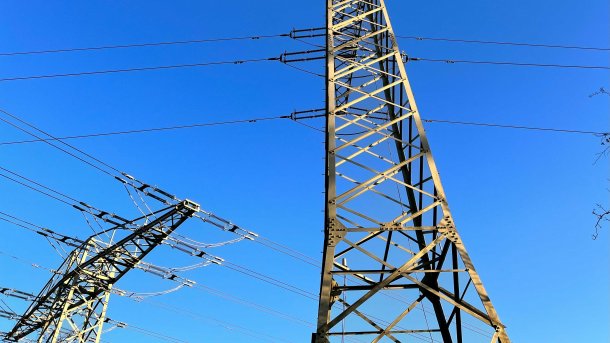Energy industry: Energy transition will cost 1.2 trillion euros by 2035
Together with EY, the German Energy Industry Association has calculated how much investment is needed for the energy transition.

Electricity pylons in Bremen
(Bild: heise online / anw)
According to its own figures, the German energy industry will have to invest around 721 billion euros in the energy transition by 2030. A further 493 billion euros will be added by 2035, according to an analysis by the German Association of Energy and Water Industries (BDEW), which it prepared together with the consulting firm EY.
According to the analysis, 350 billion euros will be due for green power generation plants by 2030, 140 billion euros for the electricity and gas transmission grids and the same amount of money for their distribution grids. Added to this are 32 billion euros for district heating, 15 billion euros for the H2 core grid, 17 billion euros for storage and 23 billion euros for generation capacities for green gases, writes the BDEW in the Energy Transition 2024 Progress Monitor (PDF).
Growth through the energy transition
The necessary private investment would enable growth, with the construction of the plants alone generating gross value added of over 52 billion euros. The energy transition could become a growth driver for Germany, says the BDEW. However, the gross value added actually generated last year is estimated at 28 billion euros, which is 54 percent of the annual potential. "At least the slump in growth in Germany caused by the war in Ukraine and the energy crisis could be limited in this way," writes BDEW.
In 2023, the share of renewables in gross electricity consumption rose to over 50% for the first time. The share of final energy consumption in heating was over 18% and in mobility more than 7%. The pressure to act remains high, particularly in the areas of heating and transport, summarizes the BDEW.
The shortage of skilled workers remains a problem. In the third quarter, almost 46% of trade businesses involved in the energy transition stated that the shortage of skilled workers was holding them back. This proportion had fallen to just under 34% by the fourth quarter, which was due to the weak economy.
Exponential growth
In addition to the power generation plants, the grids also need to be expanded, according to EY and BDEW. The demand arises, among other things, from exponential growth in photovoltaic systems, wall boxes and heat pumps. In addition to the grid connection processes, integration into the system is an increasing challenge, as heat pumps and electromobility could lead to new peak loads in the grid.
The digitalization of the grids is also important. Distribution grids need control and measurement technology/sensor technology at all voltage levels. Smart metering systems are needed on the consumer side. Monitoring and control is already well-developed at the high voltage levels, now the other levels must follow.
In addition, grid operators must prevent certain grid sections from being overloaded. Redispatches lead to high costs for the transmission system operators, which have to be paid by the consumer via the grid fees. Therefore, not only must the grid be expanded, but congestion management must also be optimized.
(anw)